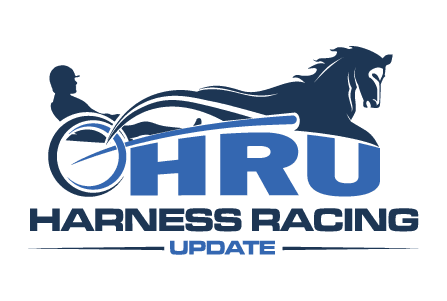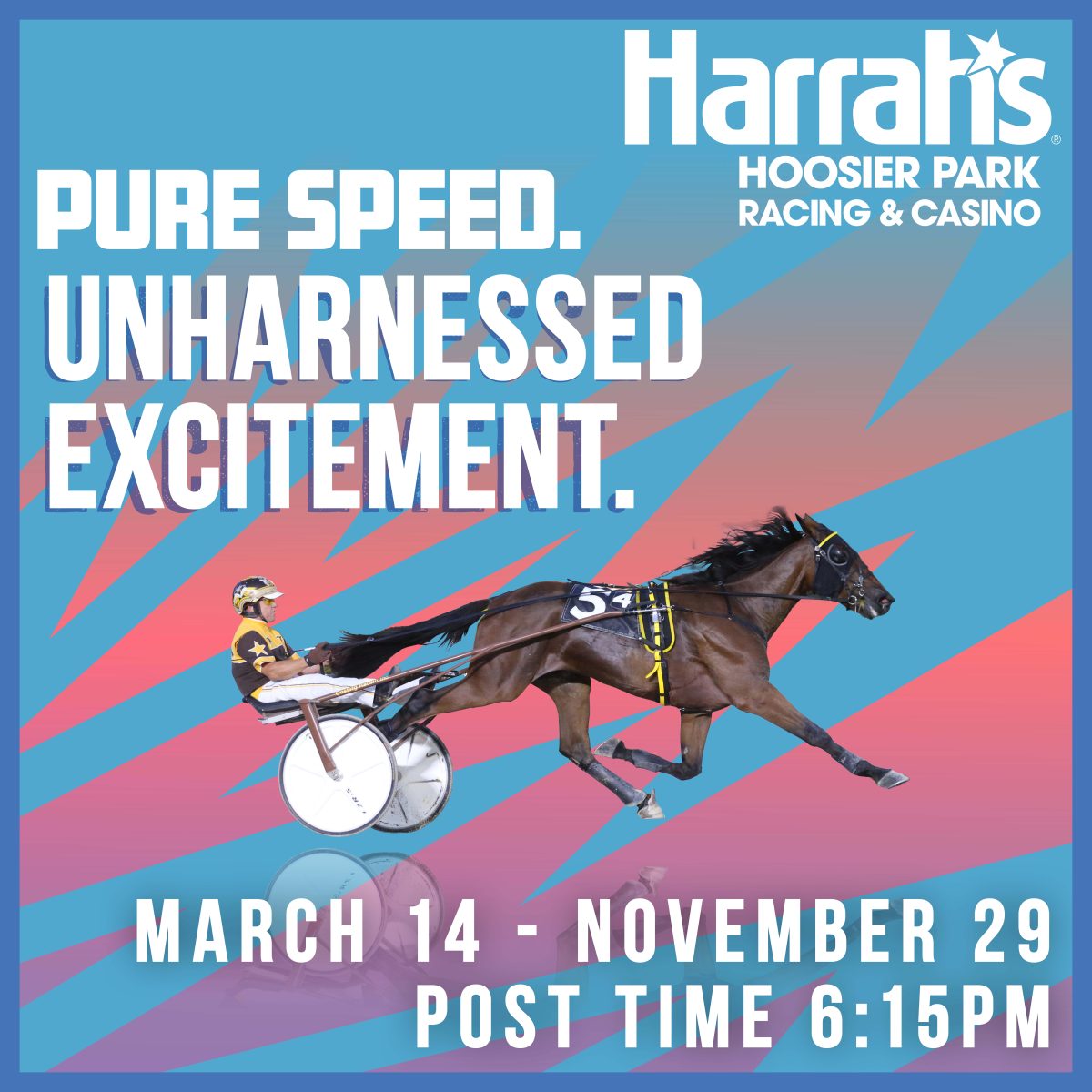USTA squares off with The Jockey Club in debate over Horseracing Integrity Act – Round 2
In the second of this two-part series, USTA president Russell Williams debates Jockey Club president Jim Gagliano over the federal legislation currently before Congress.
by Andrew Cohen
Congressional support seems to be increasing for the Horseracing Integrity Act (HIA), the pending federal legislation that would dramatically alter the legal and political landscape of horse racing in the United States. It is possible the measure will get a vote on the floor of the House and Senate either before or, more likely, after the November election. Senate Majority Leader Mitch McConnell, after all, represents the state of Kentucky.
As a potential decision-day approaches on Capitol Hill, and as racing integrity issues continue to haunt the industry, we thought it prudent to give the harness racing community an opportunity to flesh out some of the details of the pending legislation and to get answers to some of the basic questions that have been floating around about the measure for years.
We asked United States Trotting Association (USTA) president Russell Williams, who also is the CEO/president of Hanover Shoe Farms, and Jim Gagliano, the president of The Jockey Club, to engage in a virtual debate with one another over the legislation. Williams ardently opposes the HIA. Gagliano supports it and thinks the harness horse community should, too.
The ground rules were this. In Round 1, we submitted questions to Gagliano, who answered them. Then Williams responded to Gagliano and Gagliano replied to Williams. The order was reversed in Round 2. Round 1 was published in Wednesday’s HRU (full story here).
Our hope is to publish some of your responses in the Sunday edition
To send feedback, please email editor@harnessracingupdate.com.
Here’s Round 2:
Cohen Question 1: You’ve consistently argued that the proposed federal legislation “also increases the cost of regulation and threatens the livelihood of USTA members.” What evidence do you have to support that argument and the argument you’ve also made about how the Integrity Act “will drive many” harness horsemen out of the business? Is there language in the proposed legislation that supports your argument?
Russell Williams’ response: “The bill contains no language hinting at how to pay for The Authority. The only funding notion its backers have come up with is a $45 per start tax on the owners of every horse in every race, amounting to a $29 million annual cost based on 2019 statistics. Standardbreds make far more starts on average than thoroughbreds because their performance model, which avoids the thoroughbred trait for frequent catastrophic breakdowns, enables them to race safely and more often. Based on 2019, standardbred racing would pay 49 per cent of the cost of a needless federal regulatory layer while receiving only 26 per cent of the purses. Unfair.
“Ample language in the bill, however, demonstrates that this regulatory adventure will be catastrophically expensive. Section 11(b)(1) and (2) authorize The Authority to borrow an unlimited amount of money to fund its initial operations, and Section 11(b)(3) allows it to increase its own operating budget by up to 5 per cent annually. How will this be paid for? Section 11(b)(3)(A) provides the answer: by billing the state racing commissions for current expenses plus the amount needed to liquidate the unlimited loans.
“The bill’s language supports the interpretation that no standardbred representation whatsoever is required on the governing body of The Authority. We therefore face an Authority comprised of unknown decision makers executing an unknown plan at an unlimited cost. In addition to superimposing a federal regulatory layer on perfectly effective state-based medication regulation, I would not be surprised to see The Authority’s powers broadened in the near future to include other costly features like track safety and laboratory accreditation.
“USTA records show that 8,239 owners started in a harness race in 2019. We ran a report, adjusted for shared ownership, calculating the total $45 per start tax for comparison against purses won by each owner during the year. For the top 2,000 owners on the list, the new federal tax would cost five percent or more of total purses for 947 of them. The tax would cost 10 per cent or more of total purses for 239 of them. The other 6,000 owners as a group did not do as well purse-wise, therefore the federal tax would hurt them even more. Finally, 254 owners, not counted in any of the previous totals, started horses but earned zero purses during 2019. I guess they can write The Authority a check on their way out of the business.
“Every owner, regardless of circumstances, is entitled to ask the one question that has never yet received a satisfactory answer: Why do this? What defects exist in the existing state regulatory process that require us to trash the whole system and start over at the federal level with a hand-picked, inexperienced, and breathtakingly expensive private organization in place of duly-constituted state authorities?
Gagliano’s response: “Yes, it will cost more. The key question is – what kind of a sport do you want to have and what are you prepared to do to achieve that goal? HIA supporters want to have a sport where each race is determined by the participants’ natural talent and training, not how good a pharmacist or vet is at doling out medications.
“Is the current system capable of delivering this for us? For ages, opponents to the bill argued that we have the cleanest sport around. In fact, in his answer above, Williams characterized the current state-based system as ‘perfectly effective.’
“Yet, right after 27 individuals were indicted and arrested on anti-doping related charges, his tune was different.
“In a March 30, 2020, op-ed in HorseRacingInsider.com, he wrote: ‘No longer can we be excused for leaving investigation and enforcement up to our chronically underfunded racing commissions.’
“In an April 28, 2020 article, the Paulick Report quoted Williams as saying: ‘The state racing commissions are chronically underfunded. They’re left to do their jobs in a less than ideal legislative and regulatory environment, and the tradition among horsepeople has been not to police themselves.’
“How does he propose to fix the problem?
“In that op-ed, he stated that the USTA wants to ‘use the power of private investigations wherever necessary to support the work of the racing commissions.’ Yes, he wants to fund the ‘less than ideal legislative and regulatory environment’ to the tune of $250,000 of the USTA members’ money. His plan: ‘[R]ather than pouring more of our money into the state commissions, we should develop private investigative capabilities that support the regulators’ powers and we should demand the commissions’ formalized cooperation with the investigations that must be carried out.’
“For a sport with more than 300,000 starts a year, in more than 16 states at 35 tracks, paying $250,000 and ‘demanding’ that regulators do better is not realistic. Doing so would merely be a band aid on what is a gaping wound. More so, to carry forward such a private bailout of the commissions will cost USTA members by way of increased fees (dare I say that they will be “taxed” by the USTA?).
“Lastly, this so-called ‘$45 tax’ Williams spoke about is the cost of added regulation under the HIA divided by the number of U.S. starts. This cost, which is due largely to increased out-of-competition testing (key to establishing a level playing field), is not a ‘tax on owners.’ The HIA lets the states continue to choose how to allocate the cost among all industry participants – as they do now. There is nothing stating that owners (or tracks or trainers or anyone else) would be saddled with 100 per cent of the cost. It will be a shared cost, as it should be.
“One way or another, we will all have to pay some more to protect the sport we love. In his op-ed, Williams said it correctly: ‘We can resolve to embrace change and to bear its cost, because we know that only then can our racing sport thrive in the modern era.’”
Cohen Question 2: Right now one of the integrity problems in harness racing is the difficulty in getting out-of-competition drug testing of horses at privately-run farms in some states. Some jurisdictions are more permissive than others. Does the federal legislation address this problem? If so, how? If not, what alternatives does the USTA suggest to remedy this problem?
Williams’ response: “The federal bill provides, in Section 6(b)(5), for out-of-competition testing. The ‘difficulty’ with such testing under current law is not at all, as the question concludes, that some states are more ‘permissive’ than others. No, the true issue is not a difficulty, but rather an important right: due process.
“Out-of-competition testing is a search and seizure situation governed by due process, which requires law enforcement to obtain a warrant, which a judge issues only after finding probable cause. Private entities, such as The Authority, are not law enforcement and therefore cannot obtain judicial warrants. But there are exceptions to the warrant requirement, and one of those is voluntary consent.
“The federal bill, in Section 4(b)(3), attempts to impose the consent exception on all participants in racing. Voluntary? How can a private entity like The Authority, as distinguished from law enforcement entities like the state commissions, legally impose consent on people? The Authority tries to dodge this problem in Section 4(b)(2) by simply awarding itself the powers of the state commissions, but if this was legal, then other private entities like the horsemen’s associations or the USTA could do the same. The only legally valid approach is that state governmental agencies, handling voluntary consent in a legally intelligent way, would acquire vastly more effective powers to ensure integrity in racing.
“We repeatedly find ourselves asking the same basic question: Why should we set up an expensive and redundant private entity to do what is being done perfectly well at the state level? Let me mention an important point and pose the same question a different way. The state commissions are controlled by elected legislative and executive officials. The Authority will be controlled by The Jockey Club. Who should be deciding our destiny?”
Gagliano’s response: “Williams, on behalf of the USTA, has offered no solution to the question of: What alternatives does the USTA suggest to remedy this problem?
“The fact is that via the HIA, Congress will empower a new, not-for-profit, independent enforcement entity that is congressionally empowered to do what needs to be done and that the state racing commissions have proved they cannot.
“It seems to me that Williams has not read the bill correctly, leading to inaccurate analysis:
“• His assertion: ‘The Authority will be controlled by The Jockey Club.’
“FALSE. The Authority will be controlled by an independent board whose majority consists of members of the United States Anti-Doping Agency – the same folks who Congress regularly appoints to handle drug testing for all U.S. Olympic athletes. The bill also requires that the Authority’s board include six experts from horse racing – not one of whom is identified as being with The Jockey Club or any breed registry. The Jockey Club is not named in the bill at all.
“• Assertion: “The Authority tries to dodge this problem in Section 4(b)(2) by simply awarding itself the powers of the state commissions, but if this was legal, then other private entities like the horsemen’s associations or the USTA could do the same.’
“FALSE: This is a bill before Congress and Congress would be granting the Authority its powers, including out-of-competition testing powers. The courts have previously tested Congress’ power to do so and found it to be constitutional.
“The fact of the matter is that under the HIA out-of-competition testing can be conducted legally where individuals are licensed to participate in the sport. Interestingly, in his recent op-ed on cleaning up the sport, Williams offered the following wisdom: ‘All licensees in racing should be required to consent to investigation by any racing authority, in any public or private place, at any time, and also to consent to all appropriate, effective corrective action pending a hearing.’ Somehow, he forgot that when criticizing the bill.
“So, how will it work? Are investigators going to bash down your door and forcibly take samples from your horse? No. If an owner does not agree to make his or her horse available for drug testing it will not be able to race. Plain, simple, and fair.
Williams’ response: “When a wealthy private utility like Consolidated Edison wants to hobble a state utilities commission, it tries to shift jurisdiction to the Federal Energy Regulatory Commission (FERC). When this ploy works, the state commission becomes just another witness before the FERC, instead of being able to hold hearings and issue orders itself. The ploy is a prime example of regulatory capture, an economic phenomenon where regulators are brought under the control of the entities they are supposed to regulate. Using alarmist language like ‘gaping wounds,’ The Jockey Club, a wealthy organization like Con Ed, is trying to shift fundamental regulatory authority from the state commissions, which are watched over by our elected officials, to the ‘Authority,’ an amorphous federal entity that The Jockey Club will watch over.
“We are told that ‘The Jockey Club is not named in the bill at all.’ Well, the Tobacco Control Act did not name the largest tobacco companies either, yet the TCA delivered a market lock to exactly those companies. Under the Horseracing Integrity Act, the standardbred industry, with luck, might secure one seat out of the 13 on the Authority’s governing body. Apart from that token seat, all else will be organized under The Jockey Club’s control. We are watching a regulatory capture of the state racing commissions in broad daylight.
“The Jockey Club does not deny that it intends to make the standardbred industry pay a grossly inequitable share of the cost of its legislative adventure, which started life two Congresses ago as the Thoroughbred Horse Racing Integrity Act, but needed a name change when standardbreds got swept in – without our prior knowledge or consent – to help pay for it. A tabulation that we have been using to good effect on Capitol Hill, which details the cost and its inequitable allocation to the standardbred industry, appears elsewhere in this publication.
“The Jockey Club admits that a $45-per-start fee is the only funding mechanism in sight, but denies that owners will foot the entire bill, claiming that ‘it will be a shared cost.’ Malarkey. The Authority is not going to invoice all the participants in racing after every race. A per-start fee comes out of the purse, just like driver and trainer commissions. Purses are owners’ money, and The Jockey Club wants to use purses to pay for the HIA.
“Referring to the Standardbred Racing Investigative Fund, The Jockey Club said something about ‘$250,000 of the USTA members’ money.’ On the chance that this is ignorance and not prevarication, I will repeat what has already been explained publicly: the $250,000 is my own money, horsemen’s associations and others will voluntarily match it, and the USTA members’ money in our treasury will not be touched. A long-term funding model will be developed that does not invade the USTA treasury: our industry stakeholders will step up to ensure effective regulation. What will certainly come out of USTA members’ pockets, however, is $13 million per year, plus repayments of the Authority’s borrowings and whatever annual increases that the Authority chooses to impose, which the HIA will demand to pay for The Jockey Club’s takeover of racing regulation.
“Let us have a look at the ‘gaping wound.’ In 2019, state racing commissions tested 221,433 thoroughbred and standardbred racehorses, and there were 1,461 positives. That amounts to positives at a rate of seven-tenths of one per cent. The abuse of known substances of any kind – classes I through IV – is almost infinitesimally slight. We must add artillery on the frontier of unknown substances. This does not require a federal law. It requires high-level investigation, which SRIF will provide. The HIA provides no investigative capability whatsoever.
The Horseracing Integrity Act deserves zero credit for the 27 indictments, which resulted from an FBI-initiated investigation under the Pure Food and Drug Act of 1906. FBI-obtained wiretaps obtained the identities of the subjects of the indictments. The HIA contains no language that would accomplish anything similar. In fact, unlike every state commission, the Authority would not even have criminal referral powers, being relegated instead to seeking civil relief in federal court. Moreover, the Authority would never innovate. Instead, it would simply take over the existing state regulatory and investigative structures. The Authority will prove to be an unnecessary but catastrophically expensive figurehead.
“If there is a ‘gaping wound’ in horse racing, The Jockey Club inflicted it on us by causing deep division, even within the thoroughbred breed, at a time when we can least afford it. When the tale of the HIA legislative adventure is finally told, I do not think that history will be kind to The Jockey Club. To ensure that history will be kind to the rest of us, we must empower and support our state regulators.”
















